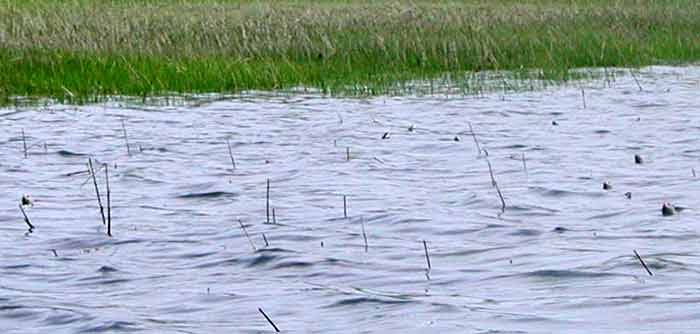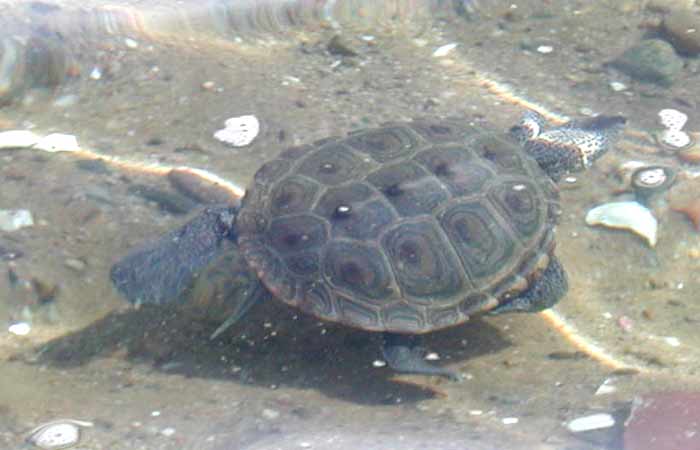The Whole Shebang: The Story of Terrapin 1233
| |||||||||||||||
Nineteen days later, to the very hour, I saw Terrapin 1233 digging her second clutch in a driveway off 5th Avenue at 10 a.m. on 10 July. Because this nest was dug in such a heavily used parking pad, I decided to harvest the eggs and relocate them to a safer spot. I probed the rough area behind her and discovered the egg chamber. There were 13 eggs which weighed a total of 95 grams. Terrapin 1233 weighed only 767 grams after laying this nest (#214), under 80 percent of her springtime weight! The eggs were placed under a predator excluder on a sandy bank off the Lowland Road where they remained until 23 September. Following a series of early fall storms, the slope began to erode, prompting me to harvest these nearly mature eggs and finish their incubation inside my garage lab. |
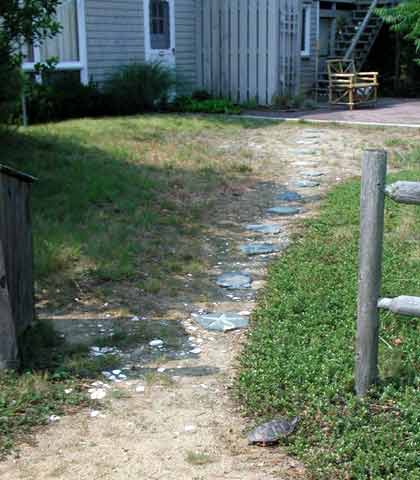 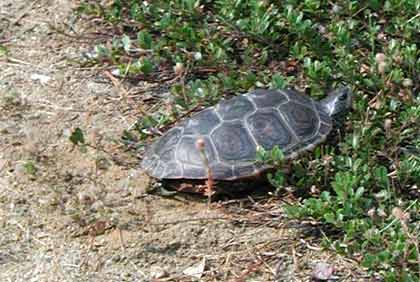 |
Egg # L W Wt 093 3.04 2.07 7.6 103 3.09 2.16 7.9 102 3.14 2.02 7.6 097 3.14 2.08 7.6 104 3.15 2.00 7.4 100 3.15 2.05 7.5 098 3.18 2.07 7.9 094 3.19 2.04 7.6 096 3.22 2.21 8.9 095 3.25 2.02 7.6 099 3.25 2.21 9.0 101 3.28 1.97 7.4 105 3.28 2.05 7.8 |
For the record, the table at the right shows the measurements of Nest 214 in ascending size order, based on maximum length. (L=length. W=width Wt=weight, in centimeters and grams.)
Hatchlings from Nest 214 began to emerged on 9 October. After two popped from the moist, sandy bucket, I exposed the chamber to find all but one turtle ready to emerge. The last one was left in the incubation container until it, too, emerged on 11 October.
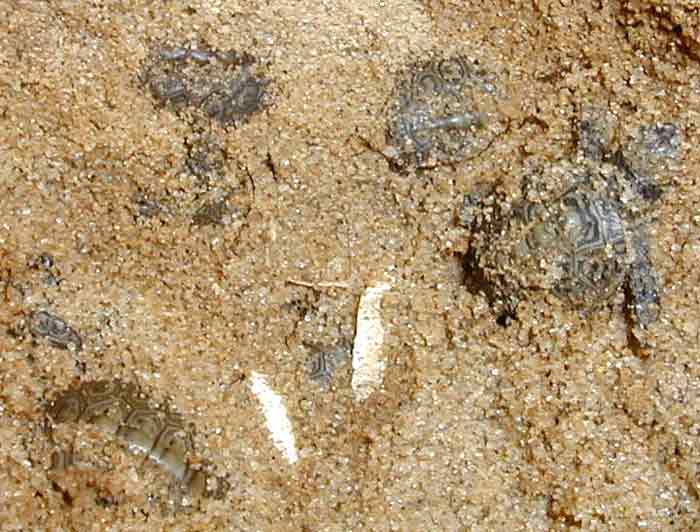
Of the 13 babies, three showed anomalies. Hatchlings 609 and 610 had a split rear marginal on the right side. Hatchling 617 sported split rear marginals on both sides as well as a 5th vertebral split into three scutes.
Hatchling CL CW PL Wt
618 2.57 2.28 2.24 5.2*
606 2.61 2.31 2.32 5.5
611 2.62 2.26 2.29 5.6
608 2.63 2.29 2.30 5.6
613 2.63 2.37 2.35 5.6
607 2.65 2.24 2.37 5.4
609 2.67 2.30 2.39 5.4
610 2.68 2.37 2.31 5.9
616 2.69 2.34 2.35 5.7
614 2.70 2.28 2.39 5.6
612 2.71 2.34 2.36 5.9
617 2.72 2.28 2.39 5.9
615 2.74 2.25 2.35 5.6
* = runt and last to emerge.
|
For the record and for comparison, the table at the right shows their measurements and weights, also in asscending size order. (CL=carapace length, CW=carapace width, PL=plastron length, Wt=weight, in centimeters and grams.)
Total hatchling mass amounted to 72.9 grams or nearly 77 percent of the clutch weight when laid and almost 72 percent of the weight on 23 September.
Finally, a family portrait below of 1233 and most of her second-clutch hatchlings offers enticing hints about similarity and diversity of carapace designs.

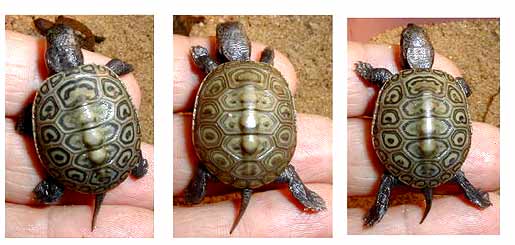

 |
 |
